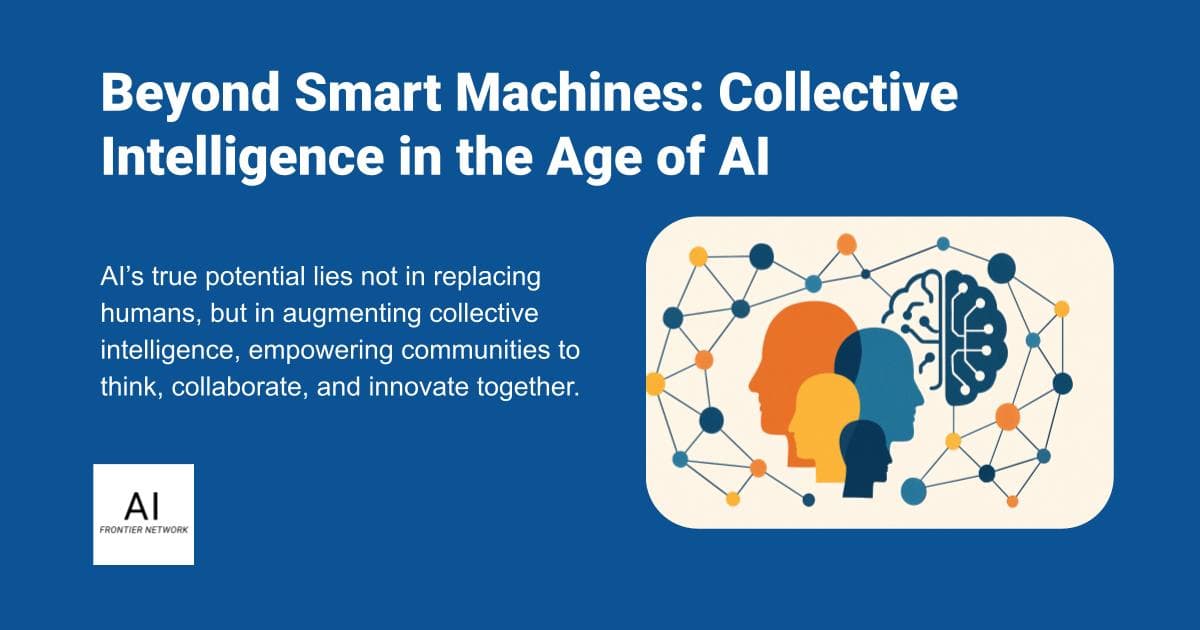As artificial intelligence becomes more embedded in our work, learning, and collaboration, the question isn’t just what AI can do, but how it can help us think, innovate, and build better together.
Srinivas Chippagiri frames it perfectly: “The future of AI shouldn’t be about automation alone, it should be about augmentation.” AI’s greatest power lies in freeing up human capacity for “creativity, empathy, and strategic thinking,” rather than replacing it.
From Smart Tools to Shared Insight
Rather than replacing human decision-making, Anil Pantangi sees AI as “a powerful delegate that works alongside us, not in place of us.” When AI handles “low-judgment tasks,” people can focus more deeply on purpose-driven, relational, and imaginative work. It’s not about smarter machines, it’s about smarter groups.
Sanjay Mood adds a note of caution and clarity: “Tech can help—but real collaboration still comes down to people.” He emphasizes that AI should amplify a range of perspectives: “If AI only reflects the same types of people or ideas, it’s not helping anyone.”
Innovation for All, Not Just the Loudest
Ganesh Kumar Suresh captures how AI reshapes team dynamics: “Innovation gets more diverse” when AI captures input from across the organization. He notes that AI enables people to stop “selling ideas” and instead start sharpening them, accelerating ideation with real-time data and feedback loops.
Ankit Lathigara shares a similar view: “AI can analyze vast data faster and surface diverse perspectives from global communities.” This not only strengthens decision-making but also enables more inclusive participation. “It can assist in community moderation, elevate constructive dialogue, and help us better understand each other.”
Designing for the Collective
Naomi Latini Wolfe brings a community-centered vision to AI. As a leader of GDG Brunswick, she envisions systems that “amplify collective intelligence and foster sustainable innovation.” Tools like “instant translation and crowdsourcing platforms” can empower local action while connecting people globally to co-create solutions.
Pankaj Pant also highlights AI’s ability to bridge divides, especially in global enterprises. “Small communication gaps can become big challenges,” he says, but tools like Microsoft Teams Copilot clarify intent and surface context in real time. For him, AI is most valuable when it “uplifts teams and ecosystems through shared understanding.”
Networks of Minds, Human and Machine
Raja Krishna argues that we must move beyond the single-model view of intelligence. “To use collective intelligence in AI, we need to shift the focus… to networks that pool many human and model perspectives.” He points to tools like Unanimous AI’s Swarm and Bittensor as emerging signs of what community-enhancing AI could look like.
Similarly, Jarrod Teo reflects on his decades of applying AI in business: “My AI products never work alone… There is only so much we can do with our customers’ information.” He explains how collaborative AI, combining market trends and human behavior, helped companies survive major disruptions like political unrest and the COVID-19 pandemic.
AI That Orchestrates, Not Overpowers
Rajesh Sura offers a compelling metaphor: “The best model of a cat is another cat, or preferably, the same cat.” Likewise, he says, “the best model for collective intelligence isn’t artificial, it’s augmented human collaboration.” Through real-time tools, multilingual agents, and shared dashboards, AI can help communities, not just individuals, make better decisions.
Conclusion: A Smarter We
This chorus of perspectives points to a single idea: the most meaningful AI isn’t artificial intelligence, it’s amplified intelligence. It’s human insight, elevated.
As Srinivas notes, AI should “serve communities, not just individuals.” It should reflect “collective values, support collaborative goals, and reduce systemic bias.”
The future of AI lies in systems that empower diverse groups to think, build, and lead together. Not faster machines, but stronger human connections.











